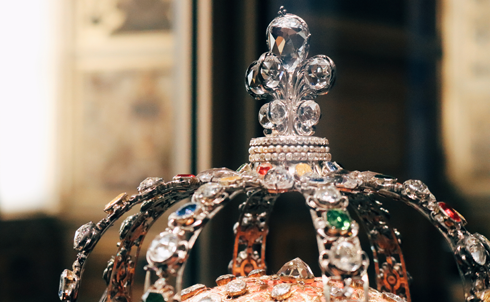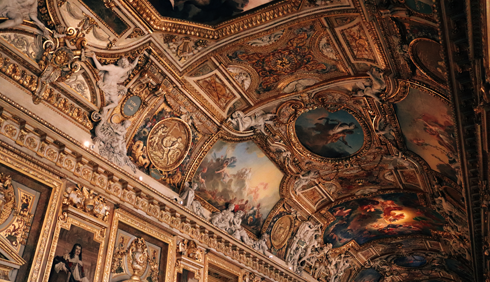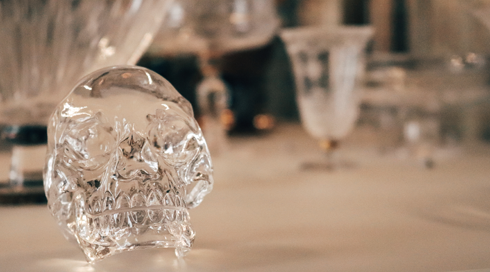The French Crown Jewels displayed in the Galerie d’Apollon at the Louvre Museum in Paris are among the most dazzling reminders of France’s royal past. They glitter beneath gilded ceilings once meant to glorify kings, yet today they belong to the people - symbols of artistry, power, and the sweeping drama of French history.
The Galerie d’Apollon itself feels like a jewel box. Built in the 17th century under the reign of Louis XIV, the Sun King, it was designed to embody divine light and royal grandeur. The architect Louis Le Vau began the work, while Charles Le Brun, the king’s chief painter, filled the vaulted ceiling and arches with mythological imagery celebrating Apollo, the god of the sun and the arts.
Later, in the 19th century, Eugène Delacroix added the spectacular painting Apollo Slaying the Python, which crowns the gallery today. Every inch of the space glows with gold and colour, reflecting both sunlight and the radiance of the jewels within it. It is no wonder that this room, once a royal showcase, became the perfect home for France’s surviving Crown Jewels.
The story of these jewels begins with King François I in 1530, who declared that certain treasures should belong not to the monarch personally but to the French state.
This decision established the tradition of the Crown Jewels of France, meant to represent the continuity of the monarchy. Over the centuries, kings and queens added to the collection: diamonds, pearls, emeralds, rubies, and sapphires gathered from across the world. These were not just ornaments - they were instruments of image and influence, worn at coronations, weddings, and state ceremonies to project wealth and divine right.
Among the most celebrated of these gems is the Regent Diamond, discovered in India and purchased for the French crown in 1717. Its 140 carats of flawless brilliance made it one of the most famous diamonds in the world. It has graced royal crowns, the hilt of Napoleon Bonaparte’s sword, and even the admiration of jewelers centuries later.
Another storied stone, the Sancy Diamond, has a pale yellow hue and a mysterious past, having passed through the hands of European princes before joining the French royal treasury. The collection also includes the Côte de Bretagne, a striking red spinel carved into the form of a dragon, said to have once belonged to Anne of Brittany.
During the French Revolution, the jewels were seized as property of the nation. In 1792, thieves broke into the royal treasury and made off with much of the collection in a daring heist. Some of the treasures were later recovered, but others vanished into private collections, never to be seen again. Decades later, under the Third Republic, the government decided to auction off most of what remained. In 1887, the bulk of the jewels were sold to private buyers, in an effort to erase the last symbols of monarchy. It was a controversial move that many historians still regret.
Fortunately, a few of the most important pieces were saved for the nation. These survivors now sparkle in the Galerie d’Apollon, displayed in glass cases beneath the gilded vaults that once echoed with royal footsteps. The Regent Diamond still catches the light like a captive sun. The Sancy sits beside it, glowing softly under the glass. The Côte de Bretagne spinel gleams crimson, a relic of the Renaissance. Nearby, the emerald and sapphire parures of Empress Eugénie, wife of Napoleon III, showcase the elegance of 19th-century design.
To stand in the Galerie d’Apollon today is to feel the weight of centuries compressed into a single shimmering space. The jewels that once symbolized royal power now embody something larger - the artistry and enduring heritage of France. Their beauty, once meant to awe subjects and foreign courts, now belongs to everyone. Visitors move quietly through the gallery, faces lit by the reflections of diamonds and gold leaf, feeling the same mixture of wonder and reverence that once surrounded the kings and queens of France.





















No comments :
Post a Comment